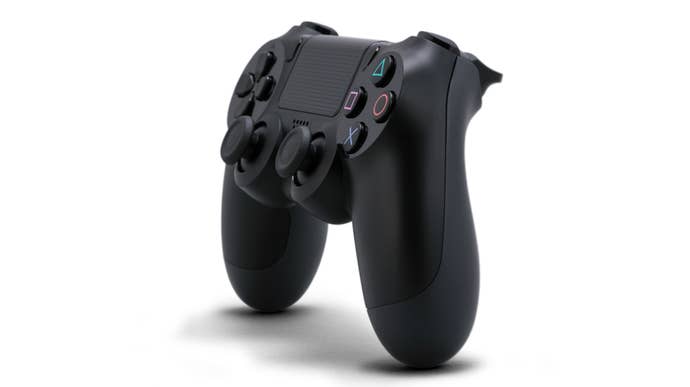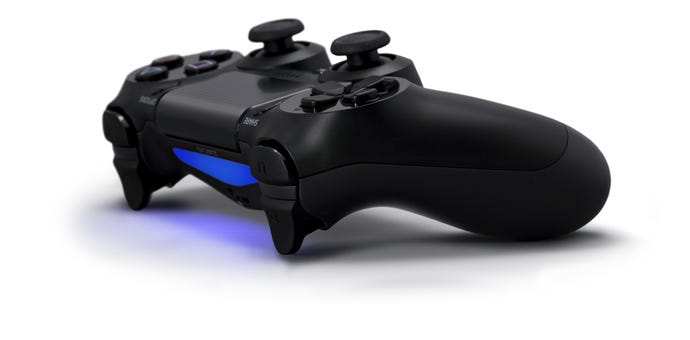TGS: Inside the DualShock 4
Kat Bailey speaks with designer Tetsu Sumii about the creation of PlayStation 4's controller, and how DualShock has evolved.
This article first appeared on USgamer, a partner publication of VG247. Some content, such as this article, has been migrated to VG247 for posterity after USgamer's closure - but it has not been edited or further vetted by the VG247 team.
Despite being fairly coincidental, there are times when it feels as if the groundwork was laid for the PlayStation 4's new controller way back in 2005, when Logitech released its popular wireless controller for the PlayStation 2.
I picked up one of the Logitech controllers after spending time with it at Best Buy, where they were also showing Soul Calibur III. At the time, I was struck by how much more comfortable the controller was than the standard DualShock 2, as well as the superior range of motion offered by the D-pad. Since then, it's remained my primary PS2 controller. I even used to tote it to my friends house for a few rounds of Guilty Gear -- no arcade stick for me.
Yesterday, I (finally) had the opportunity to hold the Dualshock 4 for the first time, and to speak with designer Tetsu Sumii about its creation. Picking it up, I was pleasantly surprised to find myself immediately flashing back to my late, great Logitech controller. The shape, heft, and the way that it felt in my hands wasn't precisely the same, but it was close enough. In Japan, they call that feeling natsukashii -- a feeling of pleasant nostalgia.
Of course, it was also a reminder of how much the humble DualShock has fallen. In fact, part of the reason I purchased that Logitech controller in the first place was that I was looking for something a little more stylish, as well as a little more comfortable.

Sumii seems to agree: "Usability was the focus of what we had to improve. We had many usability tasks, and we got a lot of feedback from kids, adults, and others. They played several hours, and they told us how they felt when they were finished. They had a bad feeling in their arm, they said, which was what we tried to solve."
Adjusting the buttons, the shape, and the analog sticks by as little as a millimeter could yield drastic differences, Sumii says. It took a year to tune the design of the DualShock 4 to the point where he was satisfied.
Of course, there were other considerations in designing the DualShock 4 as well. Much as they wanted to improve it, they also wanted to keep the same recognizable shape, lest Sony lose the hard-won brand recognition that can only come with being on the market for some 20 years. Sumii also had to deal with the requirements of the engineers, as well as cost limitations.
"Unfortunately, the cost is limited. And we've added new functionality [like the touchscreen], which raises the cost even higher," he explains. "So that's why, from the cosmetic point of view, it's really tough to make it better looking, finish-wise."
Still, Sumii found ways to upgrade the design from the DualShock 3 -- the controller's last major iteration.
"The previous DualShock 3 was like a lunch box," Sumii says bluntly. "It was a simple structure. The DualShock 4, by comparison, has a kind of hollow in the bottom, which gives it a really strong and solid feeling."
He turns it over and points to the color scheme: "Also, visually, the two different tones helps to give it a kind of special character."
All of these elements combine to make the DualShock 4 both lighter and more comfortable, as well as friendlier. The glowing light at the top, reminiscent of the PlayStation Eye, is aesthetically pleasing, but can also be used to notify players that they should be aware of, say, low ammo. Particularly important is the revisions given the all-important triggers, which Sumii acknowledges had to be improved from the DualShock 3. On the new controller, they are afforded much greater prominence, in addition to being less mushy than before.
In some ways though, the DualShock 4 is still slave to the old design concepts popularized on the PlayStation 1. The lack of offset analog sticks remains somewhat strange, as it gives the D-pad a degree of prominence that it doesn't really deserve in this day and age. Sure, it's great for platformers, but it's not like it's impossible to use the analog stick to play Mega Man. As such, it still doesn't quite match up to the Xbox 360 controller, which arguably remains the gold standard of console controller design, mushy D-pad aside.
Still, it's a big step up for the PlayStation. Whether or not people wanted to admit it, the DualShock could be a bit of a psychological barrier, especially when choosing which console to use for a third-party game (the PS3's somewhat under-developed social features being another element). With its new grip, improved shoulder buttons, and modern amenities like its headphone jack, it's much less of an issue now. And in some cases, it may even be the superior option, especially when playing the kind of retro-focused indie titles that are sure to flood the PS4 in the coming months.
It's one more example of how Sony has used the development of the PS4 to revisit and improve their approach to hardware development. My old Logitech controller will always have a special place in my heart, but with the DualShock 4, I feel much better about the future.









